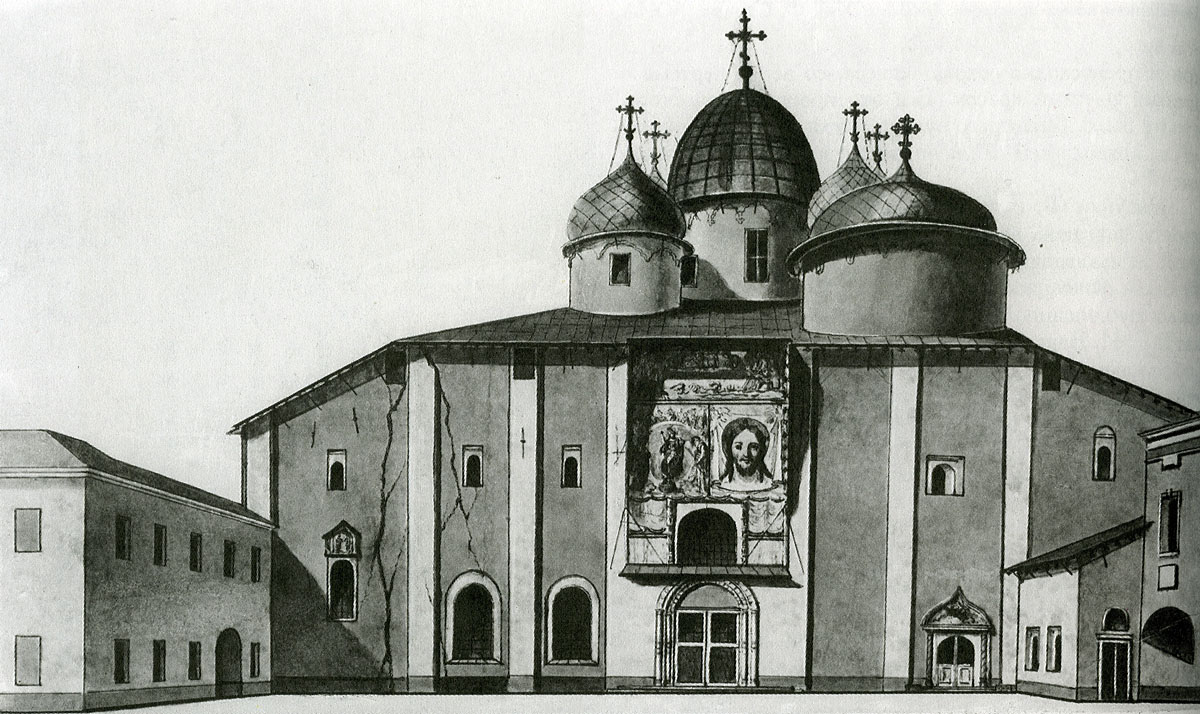|
Pivovarova House
The Pivovarova House (russian: link=no, Дом Пивоваровой) is a building in Rostov-on-Don at 45/28 . It was built as a revenue house A revenue house is a type of multi-family residential house with specific architecture which evolved in Europe during 18th–19th centuries and became a precursor of what is now known as a rental apartment house and a tenement. In various Europea ... in the late 19th - early 20th century and has the status of an object of cultural heritage. It was inscribed as an object of cultural heritage according to order No. 191 of the Regional Inspectorate for Labour Protection and Operation of Historical and Cultural Monuments, dated 29 December 2004. It is not known who the house is now named after. History The building was constructed in the late 19th - early 20th century by Dr Pyotr Pavlovich Chubukhchiyev. The building was his property until 1915. The house has survived into the 21st century. In February 2013 it became known that the buil ... [...More Info...] [...Related Items...] OR: [Wikipedia] [Google] [Baidu] |
Rostov-on-Don
Rostov-on-Don ( rus, Ростов-на-Дону, r=Rostov-na-Donu, p=rɐˈstof nə dɐˈnu) is a port city and the administrative centre of Rostov Oblast and the Southern Federal District of Russia. It lies in the southeastern part of the East European Plain on the Don River (Russia), Don River, from the Sea of Azov, directly north of the North Caucasus. The southwestern suburbs of the city lie above the Don river delta. Rostov-on-Don has a population of over one million people, and is an important cultural centre of Southern Russia. History Early history From ancient times, the area around the mouth of the Don River has held cultural and commercial importance. Ancient indigenous inhabitants included the Scythians, Scythian and Sarmatians, Sarmatian tribes. It was the site of Tanais, colonies in antiquity, an ancient Greek colony, Gazaria (Genoese colonies), Fort Tana under the Genoa, Genoese, and Azov#Fortress of Azov, Fort Azak in the time of the Ottoman Empire. In 1749, a c ... [...More Info...] [...Related Items...] OR: [Wikipedia] [Google] [Baidu] |
Revenue House
A revenue house is a type of multi-family residential house with specific architecture which evolved in Europe during 18th–19th centuries and became a precursor of what is now known as a rental apartment house and a tenement. In various European countries this type of house was known as ''immeuble de rapport'', ''hôtel de rapport'' (France); ''inmueble de inversión'', ''inmueble de alquiler'' (Spain), (Russian Empire), etc. In France, the spreading of the revenue houses started since the reign of Louis XVI. Over time, it became a popular investment by real estate developers, which resulted in repeated use of the same type of façades and overall architecture of the buildings. The proliferation of this kind of property is responsible for the uniformity of the architecture of Paris The city of Paris has notable examples of architecture of every period, from the Middle Ages to the 21st century. It was the birthplace of the Gothic style, and has important monuments of the Frenc ... [...More Info...] [...Related Items...] OR: [Wikipedia] [Google] [Baidu] |
Russian Cultural Heritage Register
The national cultural heritage register of Russia (russian: Единый государственный реестр объектов культурного наследия) is a registry of historically or culturally significant man-made Immovable property, immovable properties – landmark buildings, industrial facilities, memorial homes of notable people of the past, monuments, cemeteries and tombs, archaeological sites and cultural landscapes – man-made environments and natural habitats significantly altered by humans. The register continues a tradition established in 1947 and is governed by a 2002 law "On the objects of cultural heritage (monuments of culture and history)" (Law 73-FZ). The register is maintained by the Rosokhrankultura, Federal Service for Monitoring Compliance with Cultural Heritage Legislation (a branch of the federal Ministry of Culture (Russia), Ministry of Culture); the publicly available online database is hosted by the Ministry of Culture. Its primary ... [...More Info...] [...Related Items...] OR: [Wikipedia] [Google] [Baidu] |
Tourist Attractions In Rostov-on-Don
Tourism is travel for pleasure or business; also the theory and practice of touring (other), touring, the business of attracting, accommodating, and entertaining tourists, and the business of operating tour (other), tours. The World Tourism Organization defines tourism more generally, in terms which go "beyond the common perception of tourism as being limited to holiday activity only", as people "travelling to and staying in places outside their usual environment for not more than one consecutive year for leisure and not less than 24 hours, business and other purposes". Tourism can be Domestic tourism, domestic (within the traveller's own country) or International tourism, international, and international tourism has both incoming and outgoing implications on a country's balance of payments. Tourism numbers declined as a result of a strong economic slowdown (the late-2000s recession) between the second half of 2008 and the end of 2009, and in consequence of t ... [...More Info...] [...Related Items...] OR: [Wikipedia] [Google] [Baidu] |
Buildings And Structures In Rostov-on-Don
A building, or edifice, is an enclosed structure with a roof and walls standing more or less permanently in one place, such as a house or factory (although there's also portable buildings). Buildings come in a variety of sizes, shapes, and functions, and have been adapted throughout history for a wide number of factors, from building materials available, to weather conditions, land prices, ground conditions, specific uses, prestige, and aesthetic reasons. To better understand the term ''building'' compare the list of nonbuilding structures. Buildings serve several societal needs – primarily as shelter from weather, security, living space, privacy, to store belongings, and to comfortably live and work. A building as a shelter represents a physical division of the human habitat (a place of comfort and safety) and the ''outside'' (a place that at times may be harsh and harmful). Ever since the first cave paintings, buildings have also become objects or canvasses of much artis ... [...More Info...] [...Related Items...] OR: [Wikipedia] [Google] [Baidu] |
2.jpg)


